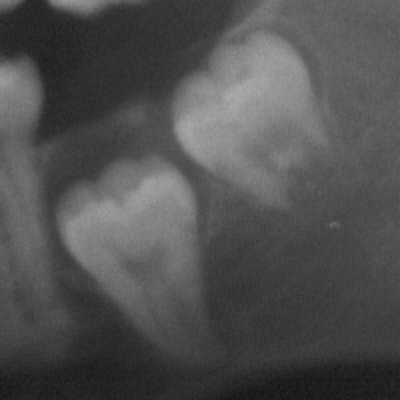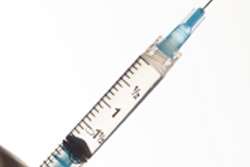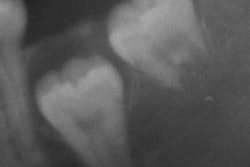
The autotransplantation of third molars has been called a feasible, fast, and economical alternative to an implant when a suitable donor tooth is available. But how do these teeth hold up over the long term, and what kind of socket is best for their placement?
Researchers from China wanted to compare long-term outcomes of autotransplanted third molars in both surgically created sockets and fresh extraction sockets. They found no significant differences in survival rates or inflammatory root resorption for either placement. The study was published in the International Journal of Oral and Maxillofacial Surgery (April 2017, Vol. 46:4, pp. 531-538).
"These results suggest that the autotransplantation of third molars with completely formed roots is effective in both surgically created and fresh extraction sockets and provides a high long-term success rate if cases are selected and treated appropriately," wrote the authors, led by H.J. Yu from Peking University School and Hospital of Stomatology in Beijing.
Useful treatment option
The autotransplantation of third molars has evolved into a useful treatment option for missing posterior teeth. Benefits to this treatment include improved aesthetics, arch forms, arch integrity, dentofacial development, mastication, and speech. The total cost of transplantation can also be less than that of implant treatment.
“These results suggest that the autotransplantation of third molars with completely formed roots is effective in both surgically created and fresh extraction sockets.”
However, the pulp of the tooth will not regenerate and long-term endodontic treatment will be required, the authors noted. Therefore, they wanted to analyze and compare the long-term clinical outcomes of mature third-molar autotransplantation in surgically created sockets and in fresh extraction sockets. They focused on the survival of the tooth and on functional success rates.
Different surgical techniques are used for autotransplantation depending on the timing of tooth loss. Conventionally, the third molar is placed into the freshly created extraction socket immediately after extraction of a nonretainable tooth. However, in patients with congenitally missing teeth or early tooth loss, the recipient site has to be created surgically.
The prospective study included a total of 65 third molars with completely formed roots that were autotransplanted in 60 patients (average age, 33.1 years). The researchers divided the teeth into two groups: control and delayed autotransplantation.
The control group consisted of 29 third molars that were autotransplanted into fresh extraction sockets (immediate autotransplantation). The delayed autotransplantation group included 36 teeth that were autotransplanted into surgically created sockets with or without guided bone regeneration (GBR). All patients underwent annual clinical and radiographic examinations with an average follow-up of almost 10 years.
The survival rates for the control, GBR, and no GBR groups were 93.1%, 95.2%, and 80.0%, respectively. The authors reported no significant differences among the groups, including no statistically significant differences with regard to the frequency of inflammatory root resorption or root ankylosis. Age did not influence the clinical outcomes.
When the delayed transplantation group was broken down into teeth with GBR and those without, the survival rates were 95% and 80%, respectively, with no statistically significant difference between the groups. When looking at inflammatory root resorption, the researchers reported, again, no significant differences among the GBR (14.3%, n = 3), no GBR (6.7%, n = 1), and control (10.3%, n = 3) groups.
Reasonable alternative
The authors noted that their study was limited by the small sample size. They also reported that changes in bone height and width were not analyzed through 3D projection, which they say is a more accurate and reliable approach.
However, autotransplantation of these teeth can be successful, especially when it happens immediately following or soon after the damaged tooth is removed, the group noted.
"The present study supports the hypothesis that mature third-molar autotransplantation for the replacement of a missing or nonretainable posterior tooth is a reasonable alternative to implant treatment," the authors wrote.



















